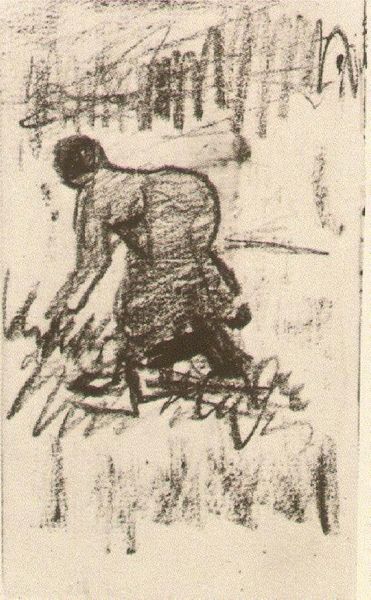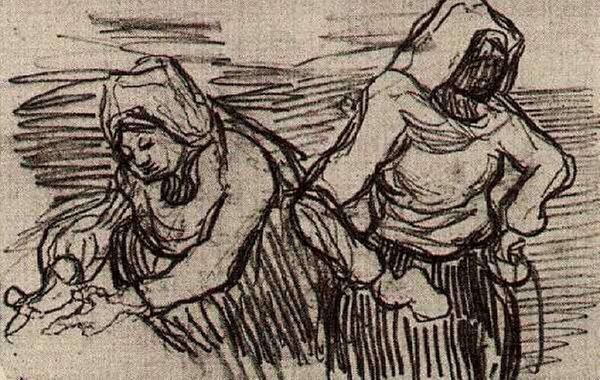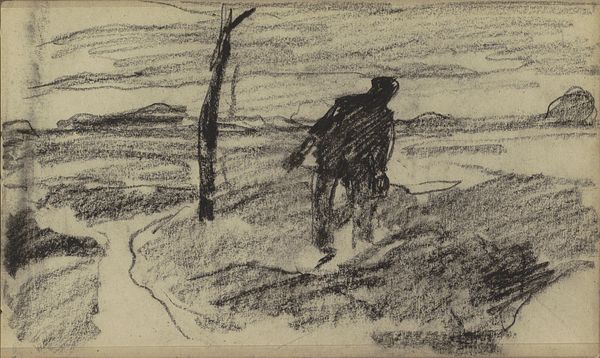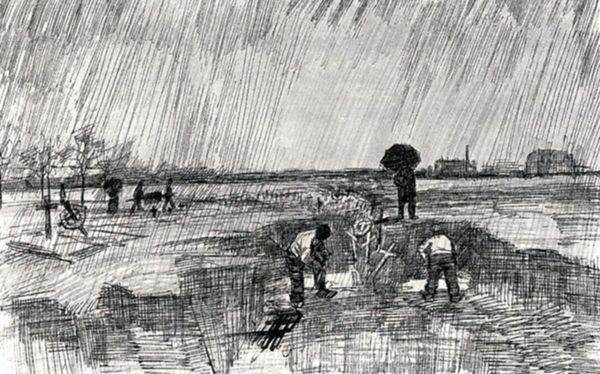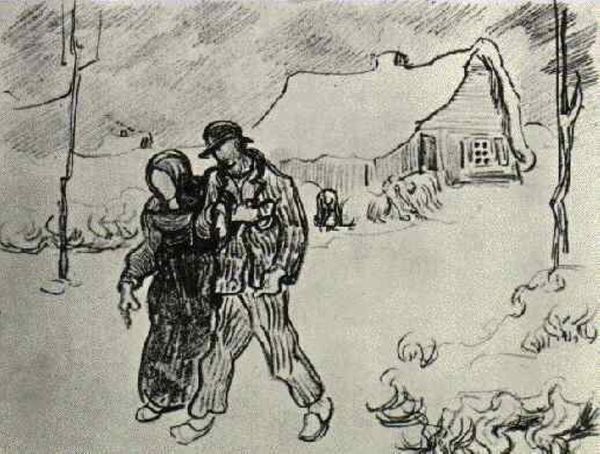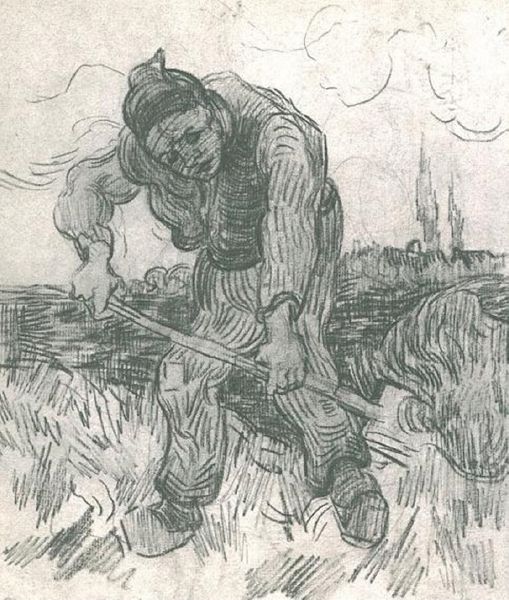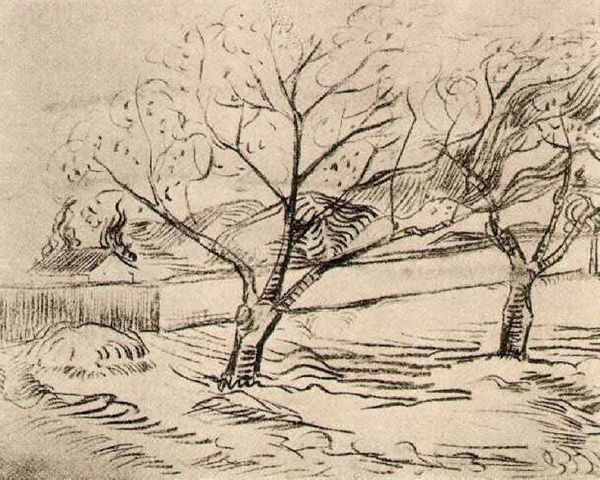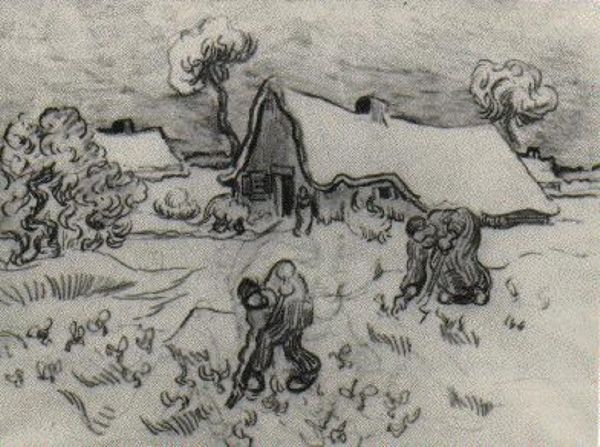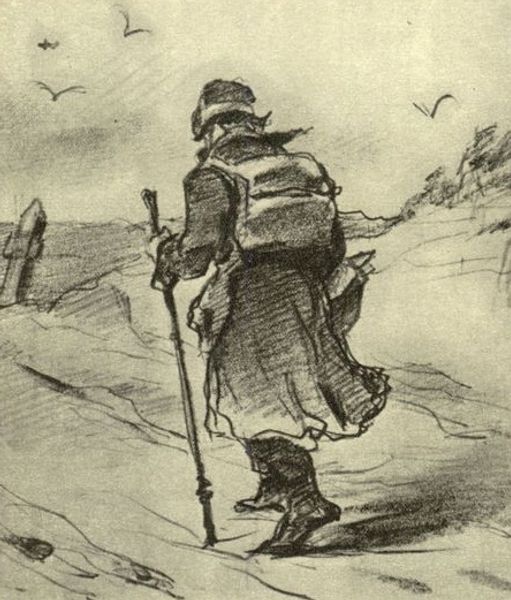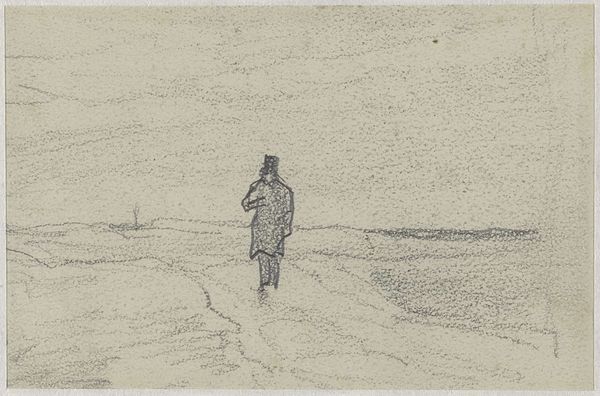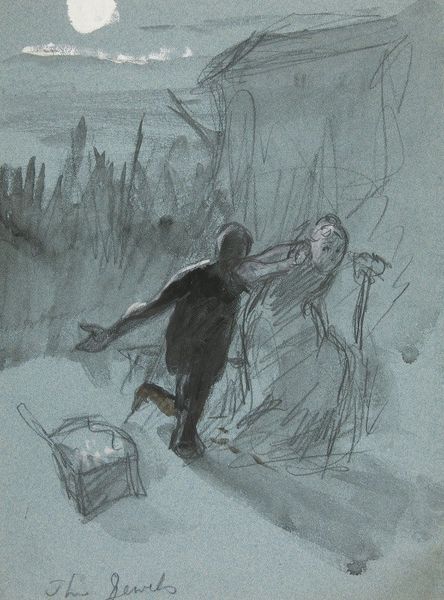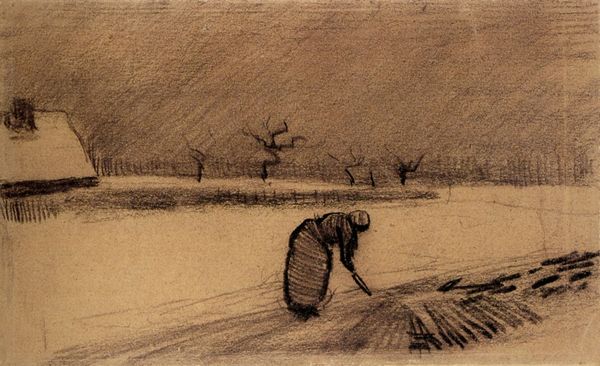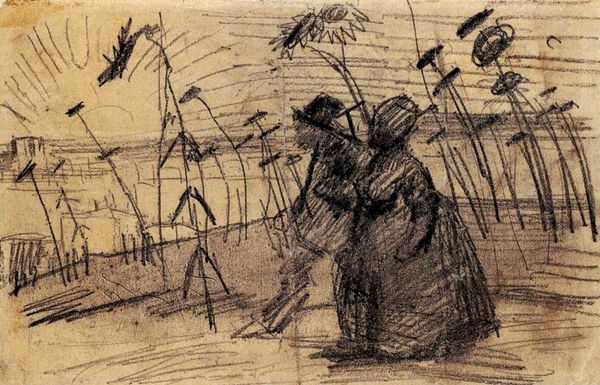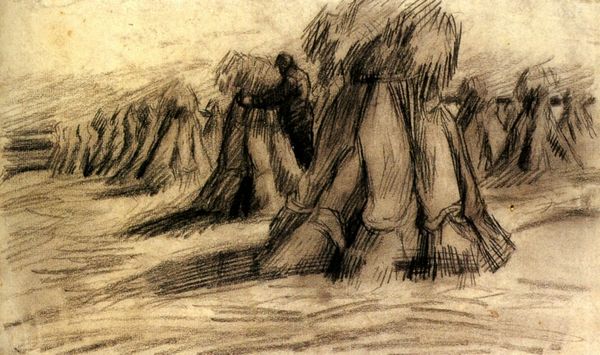
drawing, pencil, graphite
#
drawing
#
narrative-art
#
pencil sketch
#
landscape
#
figuration
#
pencil
#
graphite
#
genre-painting
#
post-impressionism
#
realism
Copyright: Public domain
Curator: This compelling graphite and pencil sketch, "Peasant, Walking with a Wheelbarrow," was created by Vincent van Gogh in 1885. Editor: My immediate impression is of solitude and heavy labor. There's a palpable sense of the peasant's weariness conveyed through those deliberate, weighty lines. Curator: Indeed. Van Gogh consistently depicted the lives of working-class people, seeing a kind of raw dignity and enduring spirit within them. The wheelbarrow itself could be seen as a symbol of the peasant’s burden and the constant labor involved in survival. Editor: Absolutely, the wheelbarrow almost becomes an extension of the figure— an emblem of the systemic exploitation and back-breaking agricultural toil they endure. It’s fascinating how he makes this solitary figure almost monumental, which underscores the sheer force it took to endure the rigid socioeconomic conditions of that era. Curator: Notice how the simple materials enhance that raw feeling too: The monochromatic scheme feels particularly poignant because it mimics the grim realities of their lives. It evokes a time when a vast underclass powered much of Europe, often unseen or ignored. Editor: And there's also that subtle but noticeable upward direction in his gait, a quiet form of defiance or resolve despite his conditions. It speaks to the quiet strength cultivated in resistance to oppressive societal forces. Curator: One of Van Gogh’s goals was to use art as a medium through which the lower classes could be given both voice and form. He imbued these everyday figures with a heroism often left for more esteemed subjects. Editor: It highlights how something like rural, agrarian hardship is actually part of our collective European heritage – reminding me how artistic production plays an important role in unveiling our shared, often ignored past. Curator: I find that his dedication to portraying the realities of agrarian life, without romanticization, emphasizes the genuine resilience of the peasantry, and the cyclical nature of their existence. Editor: Ultimately, this sketch forces a necessary confrontation with a past of labor exploitation. The work evokes both an awareness of its continued existence, even if it morphs over time and region, as well as inspiration to strive toward fairer futures.
Comments
No comments
Be the first to comment and join the conversation on the ultimate creative platform.
